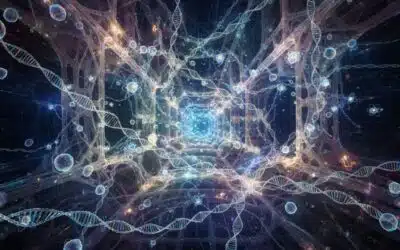The Basis of Phenomena

Written By Mila Khyentse
The Ground Basis of the reality
For the Dzogchen, all phenomena have a fundamental basis (tib.: shi, gzhi)*. However, this base is in no way different from all phenomena; it constitutes, for each one, the foundation. The basis is therefore not understood as an object – however vast – separate from the phenomena. It is an integral part of each phenomenon and each phenomenon reflects it in a perfectly equal way. Thus it is said that the nature of a sunbeam is as empty as that of the sun itself. The emptiness of the ground basis is reflected in all its phenomena.
“In the expanse in which self-knowing rigpa arises spontaneously, free of all grasping, rest and relax, without contrivance or fabrication. Whatever thoughts arise, recognizing their essence, allow them all to be liberated as the display of your own intrinsic nature.”
Longchenpa
Three Aspects of the Base
The base contains in itself three aspects: essence (nowo, ngo bo, emptiness), nature (rangshin, rang bzhin, luminosity, clarity, the capacity of emergence and reflection of emptiness) and energy (thougdjé, thugs rje, “energy or radiation of universal compassion”, manifestation), the latter divided into empty energy, external manifestation energy (tangible phenomena) and internal manifestation energy (internal luminous phenomena). The image of a mirror is often used to explain the three basic aspects: purity and clarity, the ability to reflect and the images that appear “in” the mirror are the interdependent conditions of the mirror reality. If there is no clarity, the mirror reflects nothing. If there is no reflective capacity, there are no images, and if there are no images, there is no mirror.
The base is thus understood here as the fundamental foundation of the existence of beings and of reality. In practice, in order to clearly perceive this basis, it is necessary for the dzogchen practitioner to experience the primordial state through non-dual meditation.
The Seven Statements of the Base
The exposition of the basis of reality according to the Dzogchen can enlighten us on what it is and is not. It is traditionally presented in terms of seven different (but not divergent) statements.
1. The Base is spontaneously established (lhundroup, lhun grub). Spontaneity: the basis is not a cause of the appearance of phenomena in time or space. There is therefore no anteriority or posteriority to the appearance of phenomena. They thus “appear” and “disappear” according to the conditioning factors intrinsic to their nature, but not according to the basis. Unceasing equanimity (lhun nyam, lhun mnyam) and spontaneous perfection (lhun dzog, lhun rdzogs) are its two main characteristics.
2. The Base is indeterminate (manepa, ma nges pa). Nothing exists that can be determined as “this” or “that” in the essence of intrinsic or spontaneous presence (rig pa). The basis thus appears in all forms.
3. The Base is determined (nepa, nges pa). The primordial presence (rigpa) in its essence is unchangeable. Therefore, the basis cannot be disturbed by its own expressions.
4. The Base that can transform into anything (chir yang gyur du tub pa, cir yang bsgyur du btub pa). Within the essence of the primordial presence, anything in any aspect can emerge. Rigpa manifests all things, is all things, and transforms into all things.
5. The Base as something from which everything can be imagined (tchir yang dou khé lang sou toub pa, cir yang du khas blang su btub pa). Everything can be thought in the essence of the primordial presence. The essence of the Basis being non-consistent, with nothing of its own, everything is manifest.
6. The Base that is variegated or diverse (trawo, natsog; khra bo, sna tshogs). In the essence of the awakened presence all modes of manifestation appear unceasingly.
7. The Base is primordially pure (kadag, ka dag). That is, the essence of the base is not “touched” by the dual or mixed nature of phenomena. In fact, this purity is the very essence of the phenomena, which are therefore free from appearance, cessation, existence and non-existence. In other words, they are present, but empty, thus neither “here” nor “there”, neither “appearing before” nor “disappearing after”.
How to remain naturally in the Base?
As Longchenpa said: “In the expanse in which self-knowing rigpa arises spontaneously, free of all grasping, rest and relax, without contrivance or fabrication. Whatever thoughts arise, recognizing their essence, allow them all to be liberated as the display of your own intrinsic nature.”**
More Posts
The ground of all Künshi
This article “The ground of all, Künshi” provide a better understanding of the essential words and concepts of Dzogchen.
Dzogchen in Everyday Life 14
In this second episode, Damien Brohon and Alessandra Horn explore digital loneliness: examining its mechanisms, its impacts, and the surprising parallels between algorithms and the ordinary functioning of our minds.
The Four Testaments of the Vidyādharas
This article from Grégoire presents the" Four Testaments of the Vidyādharas", essential teachings from the early masters of Dzogchen.

Follow Us
Join
Subscribe For Latest News & Articles
Join the world of Dzogchen Today!
Latest News on
- Our Projects
- Practices
- Tips & More…
Monthly News
We won’t bother you!



